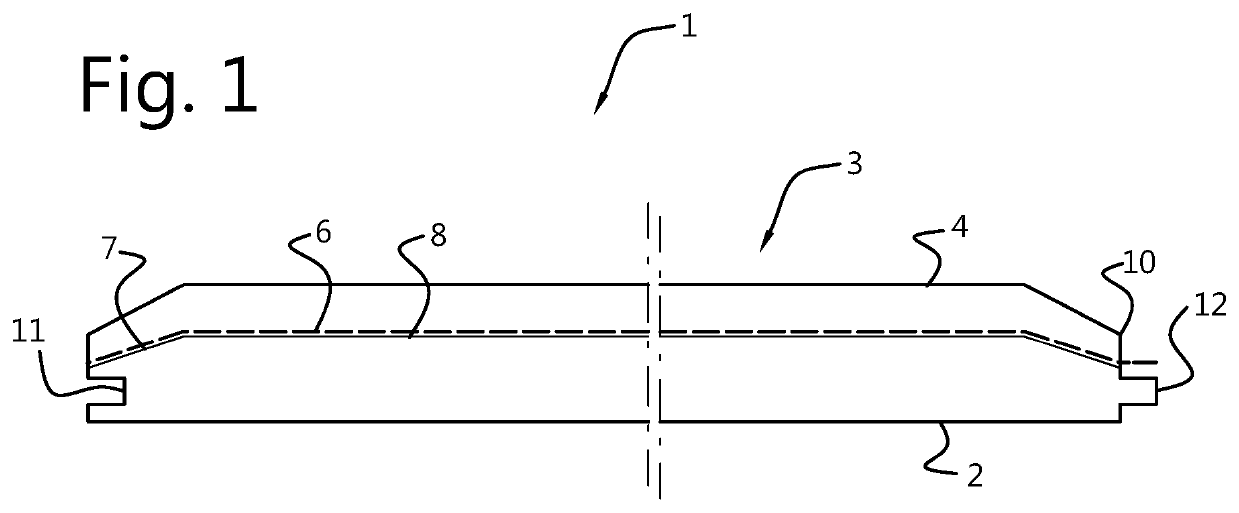Covering and Method for Producing Coverings
- Summary
- Abstract
- Description
- Claims
- Application Information
AI Technical Summary
Benefits of technology
Problems solved by technology
Method used
Image
Examples
example 1
[0090]In a first example, the covering is a covering panel comprising a rigid substrate which comprises a core with a top surface and bottom surface as well as side surfaces. The substrate comprises an extruded PVC material with a colorant distributed uniform throughout the substrate. The substrate has a thickness of about 5 mm. A print pattern is directly applied on the substrate on the top surface. A wear layer is provided on the print pattern on the top surface of the substrate, which wear layer is an acrylated urethane based UV-curable layer. The print pattern and the wear layer together form a surface layer on the top surface of the substrate.
[0091]The covering of example 1 was made by first producing the substrate by extruding PVC whereby a colorant was added during the extrusion process to provide the substrate with a uniform colour, after which a print pattern was directly applied on the top surface using an inkjet printing technique with UV inks. About 8 mL UV ink per m2 su...
example 2
[0092]The covering of example 2 is similar to the covering of example 1 and produced in a similar fashion, but the bottom surface of the substrate is sanded.
[0093]The covering of example 2 was made by first producing the substrate by extruding PVC whereby a colorant was added during the extrusion process to provide the substrate with a uniform colour. After extrusion, the bottom surface of the substrate was sanded, after which a print pattern was directly applied on the top surface using an inkjet printing technique with UV inks.
example 3
[0094]The covering of example 3 is similar to the covering of example 1 and produced in a similar fashion, but it is provided with an embossing pattern. This embossing pattern was provided to the covering by providing the substrate, prior to applying the print pattern to the substrate, with the embossing pattern using a mechanical embossing technique.
PUM
 Login to View More
Login to View More Abstract
Description
Claims
Application Information
 Login to View More
Login to View More - R&D
- Intellectual Property
- Life Sciences
- Materials
- Tech Scout
- Unparalleled Data Quality
- Higher Quality Content
- 60% Fewer Hallucinations
Browse by: Latest US Patents, China's latest patents, Technical Efficacy Thesaurus, Application Domain, Technology Topic, Popular Technical Reports.
© 2025 PatSnap. All rights reserved.Legal|Privacy policy|Modern Slavery Act Transparency Statement|Sitemap|About US| Contact US: help@patsnap.com

